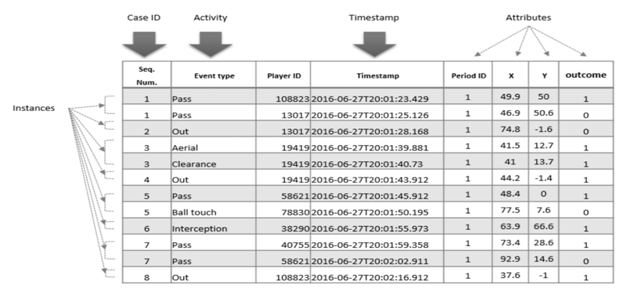Introducing process mining in an organization can provide valuable insights into business processes, uncover inefficiencies, and support continuous improvement. However, the decision to plan for process mining consulting requires a thoughtful evaluation of both the organization’s current state and its readiness for process mining. Below are the key conditions, prerequisites, and criteria to determine whether an organization is ready for process mining.

Key Conditions for Planning Process Mining Consulting
1. Business Need for Process Improvement
-
- When to Consider: If the organization faces challenges such as inefficiencies, process bottlenecks, or deviations from standard processes, and there is a need to improve operational performance, process mining is an effective tool to drive optimization.
- Indicators:
- Processes are complex or poorly understood.
- Lack of visibility into end-to-end process flows.
- Frequent delays or errors in key processes (e.g., order fulfillment, customer support).
- High operational costs with room for streamlining.
2. Need for Automation or Digital Transformation
-
- When to Consider: If your organization is planning or undergoing digital transformation or looking to implement robotic process automation (RPA), process mining can help identify processes that are best suited for automation.
- Indicators:
- Plans for implementing RPA or other automation technologies.
- Uncertainty about which processes should be automated.
- Lack of clarity on how automation could improve processes.
3. Desire for Data-Driven Decision Making
-
- When to Consider: If the organization wants to move from intuition-based decision-making to data-driven strategies, process mining can provide the necessary insights by revealing inefficiencies and opportunities for improvement.
- Indicators:
- Senior leadership is pushing for fact-based decisions.
- Current decisions rely heavily on subjective or manual data collection methods.
- Need for performance metrics and KPIs to track processes.
4. Regulatory Compliance and Process Conformance
-
- When to Consider: If the organization must comply with strict regulations or standards, process mining can ensure that processes conform to these regulations and help identify non-compliant behavior.
- Indicators:
- Risk of non-compliance with regulations such as GDPR, SOX, or industry-specific standards.
- Difficulty tracking compliance across complex workflows.
5. Frequent Process Changes or Reengineering
-
- When to Consider: If the organization is frequently adjusting its business processes or undertaking process reengineering efforts, process mining can help identify the most effective changes and evaluate the impact of those changes.
- Indicators:
- Recent or planned process redesign initiatives.
- Lack of visibility into how changes affect overall process performance.
- Need to assess the success of reengineered processes.
Key Prerequisites for Process Mining

1. Data Availability
-
- Requirement: The organization must have a sufficient amount of process-related data stored in systems like ERP, CRM, or other transactional systems. The data should include event logs with case IDs, activities, timestamps, and other relevant attributes.
- Indicators:
- Transactional systems (e.g., SAP, Oracle, Salesforce) are in place and generate event logs.
- Log data is structured and accessible for extraction.
- The organization has historical process data available for analysis.
2. System Integration Capabilities
-
- Requirement: The organization should be able to connect its existing systems to a process mining tool. This may involve setting up data connectors or integration platforms that allow for data extraction from multiple sources.
- Indicators:
- Ability to integrate with ERP, CRM, databases, or custom applications.
- Data connectors for process mining tools can be implemented or are already in place.
3. Support from Stakeholders
-
- Requirement: Support from key stakeholders, including business process owners, IT teams, and senior management, is essential to ensure the success of a process mining initiative. Stakeholders must understand the benefits of process mining and be willing to participate.
- Indicators:
- Commitment from leadership to invest in process improvement.
- Business process owners are involved and engaged in identifying areas for improvement.
- IT teams are available to assist with data extraction, integration, and security.
4. Clear Objectives and Use Cases
-
- Requirement: The organization should have clear objectives and use cases for process mining, such as improving operational efficiency, reducing costs, enhancing customer experience, or ensuring compliance.
- Indicators:
- Defined goals for what the organization aims to achieve with process mining.
- Specific processes (e.g., procure-to-pay, order-to-cash) have been identified as focus areas.
- Use cases are aligned with overall business strategy.
5. Data Quality and Integrity
-
- Requirement: The organization’s data must be of high quality, meaning it should be accurate, complete, and properly structured. Poor data quality can lead to incorrect insights from process mining.
- Indicators:
- Data is regularly cleaned and maintained by the organization.
- Processes for ensuring data accuracy and completeness are in place.
- The organization can identify and correct data discrepancies, such as missing timestamps or case IDs.
6. Technical Infrastructure
-
- Requirement: The organization must have the necessary technical infrastructure to support process mining, including data storage, processing power, and network capabilities. This may involve deploying process mining on-premise or in the cloud.
- Indicators:
- Sufficient computing resources (e.g., servers, cloud storage) to handle large datasets and complex process analysis.
- Robust network infrastructure for data transfer between systems and process mining tools.
- Secure communication protocols in place for data extraction.
7. Security and Compliance
-
- Requirement: Given that process mining deals with sensitive data, the organization must ensure compliance with relevant security and privacy regulations (e.g., GDPR, CCPA).
- Indicators:
- Data encryption protocols are in place for data at rest and in transit.
- User access controls, including role-based access, are enforced.
- The organization has policies and procedures for handling sensitive data.
Criteria for Determining Sufficient Data and Processes for Process Mining

1. Volume of Process Data
-
- Criteria: The organization must generate a sufficient volume of process-related data to conduct meaningful analysis. Generally, the more data points (event logs), the better the insights into process performance.
- Indicators:
- The organization processes thousands of transactions or activities daily/weekly/monthly.
- Logs capture a wide range of events across different stages of a process (e.g., start, intermediate steps, completion).
- Historical data is available for trend analysis over time.
2. Complexity of Processes
-
- Criteria: Process mining is most effective in organizations where processes are complex, involve multiple steps, and are difficult to visualize or manage manually. If processes are simple or linear, process mining may not provide significant value.
- Indicators:
- Processes involve multiple departments or systems (e.g., finance, procurement, supply chain).
- Processes have multiple variants or deviations from the standard workflow.
- There are frequent handoffs between systems or teams.
3. Process Variability
-
- Criteria: If your organization experiences variability in how processes are executed (e.g., different outcomes or exceptions), process mining can help identify and standardize best practices.
- Indicators:
- The same process has multiple execution paths (e.g., different ways orders are fulfilled).
- Significant variations exist in process cycle times (e.g., some transactions are fast, others are delayed).
- Frequent process exceptions or manual interventions are observed.
4. Process Performance Issues
-
- Criteria: If key processes suffer from inefficiencies, bottlenecks, or poor performance, process mining can help diagnose the root causes and suggest improvements.
- Indicators:
- Certain processes regularly cause delays, errors, or customer complaints.
- High costs are associated with executing specific processes.
- Manual workarounds are frequently needed to complete processes.
5. Data Accessibility
-
- Criteria: The organization should have ready access to data stored in systems like ERP, CRM, databases, or cloud platforms. The data should be extractable using data connectors or integration tools.
- Indicators:
- The organization can extract event logs and process data without major barriers.
- Existing data is well-structured and aligns with process mining requirements (e.g., case ID, activity, timestamps).
- IT teams are capable of setting up data integration with process mining tools.
Conclusion
Planning for process mining consulting requires an assessment of the organization’s business needs, data infrastructure, and process complexity. Before introducing process mining, you must ensure the availability of sufficient data, well-defined objectives, stakeholder buy-in, and the technical infrastructure to support the tool. Process mining is most valuable when applied to complex, variable processes where performance improvements can have a tangible impact. Once these prerequisites are met, the organization is ready to engage in a process mining initiative, allowing it to optimize operations, automate tasks, and make data-driven decisions

